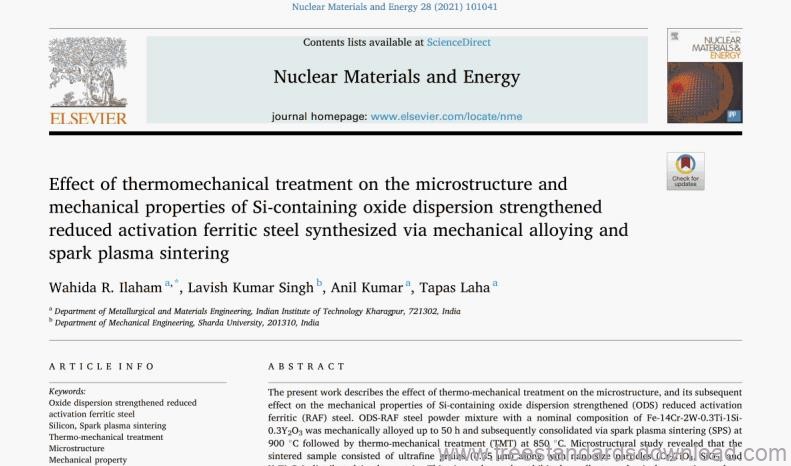
Ferritic steels have a good potential for nuclear reactor applications due to less irradiation void swelling, low thermal expansion coefficient, high thermal conductivity, good oxidation resistance, and low material cost. However, their poor strength and creep resistance limit their utility only up to 550 = C. Addition of thermally stable oxide particles into a ferritic matrix can effectively improve its high temperature strength and creep resistance. In recent times, several researchers have observed that oxide dispersion strengthened reduced activation ferritic (ODS-RAF) steels can be considered as a potential material for advanced nuclear reactors. The properties of ODS-RAF steels highly depend on the chemical compositions which mainly consist of chromium (Cr), titanium (Ti), tungsten (W), and yttria (Y2O3) as the alloying constituents. Chromium stabilizes ferritic structure by solid solution hardening and provides oxidation/corrosion resistance by forming a protective oxide scale on the substrate.
Keywords:
Oxide dispersion strengthened reducedactivation ferritic steel
Silicon,Spark plasma sintering
Thermomechanical treatment
Microstructure
Mechanical property

